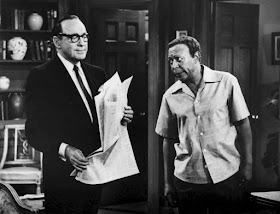Today we celebrate the 108th birthday of one of the greatest dancers of all time Gene Kelly. On a personal note, my Great Aunt babysat a young Gene when they were neighbors briefly. Kelly was born in the East Liberty neighborhood of Pittsburgh on August 23, 1912. He was the third son of James Patrick Joseph Kelly, a phonograph salesman, and his wife, Harriet Catherine Curran. His father was born in Peterborough, Ontario, Canada, to an Irish Canadian family. His maternal grandfather was an immigrant from Derry, Ireland, and his maternal grandmother was of German ancestry. When he was 8, Kelly's mother enrolled him and his brother James in dance classes. As Kelly recalled, they both rebelled: "We didn't like it much and were continually involved in fistfights with the neighborhood boys who called us sissies ... I didn't dance again until I was 15."
At one time his childhood dream was to play shortstop for the hometown Pittsburgh Pirates. By the time he decided to dance, he was an accomplished sportsman and able to defend himself. He attended St. Raphael Elementary School in the Morningside neighborhood of Pittsburgh and graduated from Peabody High School at age 16. He entered Pennsylvania State College as a journalism major, but the 1929 crash forced him to work to help his family. He created dance routines with his younger brother Fred to earn prize money in local talent contests. They also performed in local nightclubs.
In 1931, Kelly enrolled at the University of Pittsburgh to study economics, joining the Phi Kappa Theta fraternity. He became involved in the university's Cap and Gown Club, which staged original musical productions. After graduating in 1933, he continued to be active with the Cap and Gown Club, serving as the director from 1934 to 1938. Kelly was admitted to the University of Pittsburgh Law School.
His family opened a dance studio in the Squirrel Hill neighborhood of Pittsburgh. In 1932 they renamed it The Gene Kelly Studio of the Dance and opened a second location in Johnstown, Pennsylvania, in 1933. Kelly served as a teacher at the studio during his undergraduate and law student years at Pitt. In 1931 he was approached by the Beth Shalom Synagogue in Pittsburgh to teach dance, and to stage the annual Kermesse. The venture proved a success, Kelly being retained for seven years until his departure for New York.

Kelly eventually decided to pursue a career as a dance teacher and full-time entertainer, so he dropped out of law school after two months. He increased his focus on performing and later claimed: "With time I became disenchanted with teaching because the ratio of girls to boys was more than ten to one, and once the girls reached 16 the dropout rate was very high." In 1937, having successfully managed and developed the family's dance school business, he finally did move to New York City in search of work as a choreographer.Kelly returned to Pittsburgh, to his family home at 7514 Kensington Street by 1940, and worked as a theatrical actor.
After a fruitless search for work in New York, Kelly returned to Pittsburgh to his first position as a choreographer with the Charles Gaynor musical revue Hold Your Hats at the Pittsburgh Playhouse in April 1938. Kelly appeared in six of the sketches, one of which, La cumparsita, became the basis of an extended Spanish number in the film Anchors Aweigh eight years later.
His first Broadway assignment, in November 1938, was as a dancer in Cole Porter's Leave It to Me!—as the American ambassador's secretary who supports Mary Martin while she sings My Heart Belongs to Daddy. He had been hired by Robert Alton, who had staged a show at the Pittsburgh Playhouse where he was impressed by Kelly's teaching skills. When Alton moved on to choreograph One for the Money he hired Kelly to act, sing, and dance in eight routines. In 1939 he was selected for a musical revue, One for the Money, produced by the actress Katharine Cornell, who was known for finding and hiring talented young actors.
Kelly's first big breakthrough was in the Pulitzer Prize–winning The Time of Your Life, which opened on October 25, 1939—in which, for the first time on Broadway, he danced to his own choreography. In the same year, he received his first assignment as a Broadway choreographer, for Billy Rose's Diamond Horseshoe. Soon Hollywood was calling, and the rest was Hollywood history...

























